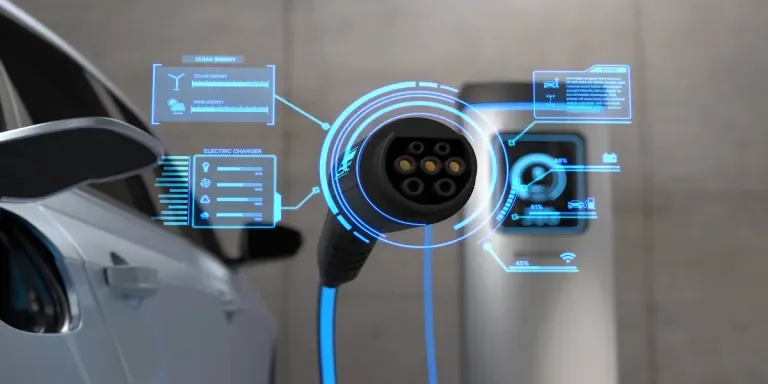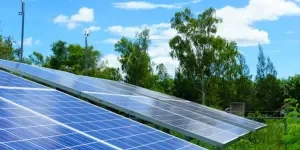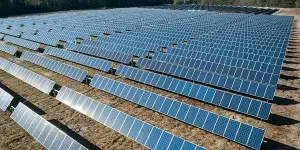Power batteries are a critical component of modern technology that stores and releases energy, making them crucial for smartphones, laptops, and even electric vehicles.
Power batteries have seen recent development in terms of performance and efficiency. One of these advancements is the outset of hydrogen fuel cell technology, which is gaining popularity due to its potential to provide sustainable energy. Unlike conventional fossil fuels, hydrogen power is an alternative transportation fuel that produces zero emissions and is renewable.
This technology is relatively newer than standard electric vehicles, which have gained traction lately. Since 2015, only three car companies have sold hydrogen-powered cars, with the highest sales of just over 10,700 across two generations. These three car companies are Hyundai, Honda, and Toyota.
Notably, popular media companies like CNN have made reports regarding hydrogen. For example, one of their recent articles revealed the plans between RWE, one of Germany’s power producers, and Norwegian state energy firm Equinox to build hydrogen-fueled power plants in Germany over the next few years, including a pipeline for their transportation.
Again, another report covers a statement by an aviation company, Airbus, that publicly announced their development of a hydrogen-powered fuel cell engine as part of their initiative to launch a zero-emission aircraft by 2035. All these are efforts to propel technological growth.
Table of Contents
What is hydrogen fuel cell technology?
Which vehicles can use hydrogen power technology?
What’s the future of hydrogen fuel cell technology?
Final thoughts
What is hydrogen fuel cell technology?
Hydrogen fuel cell technology uses an electrochemical process that converts the chemical energy of hydrogen and oxygen into electrical energy.
It is accomplished by using a fuel cell stack, a series of individual fuel cells producing small amounts of electricity that are summed to boost electrical energy.
The power generation principle is based on the redox reaction of hydrogen and oxygen. Hydrogen gas is introduced at the anode while oxygen enters through the cathode side of the fuel cell. Both gasses are separated by an electrolyte, which allows positively charged ions to pass through without the gasses mixing.
Next, hydrogen comes in contact with a catalyst placed at the anode and is oxidized to produce protons (positively charged hydrogen ions) and electrons (negatively charged hydrogen ions). The protons pass through the electrolyte to the cathode, while the electrons which cannot pass through the electrolyte are forced to move around the circuit to the cathode. This flow of ions is what creates an electrical current.
At the cathode, reduction occurs with oxygen, reacting with the protons and electrons received to produce water. The total reaction gives off electrical energy through the flow of these ions, either used to power the electric motor that drives the car or to charge a small lithium-ion battery that saves energy for use later.
This battery also captures power from the vehicle’s reformative braking system and stores excess energy released from the fuel stack during low-energy driving.
Which vehicles can use hydrogen power technology?
Hydrogen power technology is mainly used in buses and trucks at the current application level. However, the deployment is very low as several factors, such as high cost and limited infrastructure, hinder this technology’s expansion.
Nevertheless, hydrogen-powered vehicles have certain benefits alien to their combustion counterparts. Firstly, buses that run on hydrogen fuel do not emit harmful pollutants or greenhouse gasses as conventional vehicles do. It’s because the chemical process of the cells only releases water vapor and heat as byproducts, making them a clean alternative to fossil fuel.
Also, hydrogen-powered buses run smoothly and quietly without vibration or noise, which is common with traditional vehicles. These HFC batteries also have higher density, so they can last longer and provide better vehicle performance.
At the time of this publication, typical hydrogen energy vehicles can last for 300-400 miles before refueling, whereas average electric vehicles last for only 250 miles. Moreover, their refueling time only takes a few minutes and is significantly low compared to average electrical vehicles, which can take several hours to recharge.
Unfortunately, hydrogen energy technology has a few setbacks. As sustainable as hydrogen fuel appears, the production and storage of the hydrogen itself are more expensive than traditional diesel and gasoline. Despite being the most abundant element in the universe, hydrogen is never found pure.
Due to its atomic nature, it is always combined with other elements, which can be hard to separate. For instance, obtaining hydrogen energy from natural gas (CH4) requires vast power to “crack” and releases CO2 as a byproduct.
Consequently, the efficiency of the industrial manufacturing process is relatively low, which means more energy is required to produce and ship the fuel than the energy it will provide. This leads to the question of whether it is indeed sustainable.
Moreover, there are very few hydrogen refueling stations, discouraging drivers from embarking on long journeys. For example, statistics show that the number of hydrogen refueling stations in California is a mere 60. Meanwhile, traditional gas has more than 100,000 well-developed refueling stations nationwide.
The cost of hydrogen fuel is also high from US$ 10 to US$ 17 compared to gasoline stations which range from US$ 5 to US$ 8.50 per gallon. Additionally, there are safety concerns about whether hydrogen refueling stations are reasonable since hydrogen can be highly flammable if not appropriately handled.
What’s the future of hydrogen fuel cell technology?
Despite its flaws, the demand for hydrogen-powered vehicles might increase over the next few years as air pollution and climate change concerns continue to grow. This increase is due to its zero-emission status that caters to transitioning to cleaner transportation options.
Likewise, technological advancements are anticipated to improve hydrogen fuel cells’ efficiency, cost-effectiveness, and reliability, making hydrogen-powered vehicles more appealing and affordable to consumers.
Government and private companies are also investing in building more infrastructure, such as refueling stations. Hence, people are more likely to adopt hydrogen-powered vehicles in subsequent years.
But that’s not all. With the current energy crisis looming worldwide, governments are rapidly pursuing future-proof strategies. As a result, they’re investing in LNG and new natural gas infrastructures, making way for future implementation of clean hydrogen energy.
If all current projects successfully kick off by 2030, low-carbon hydrogen can boost up to 16-24 Mt yearly. Based on these predictions, green hydrogen from electrolyzers will account for 9-14 Mt, while blue hydrogen will account for 7-10 Mt.
However, the hydrogen energy sector continuously suffers from inconsistent regulatory frameworks, uncertainties about future demands, and a lack of equipment to transport hydrogen fuel cells. Unfortunately, only 4% of new projects have reached the final investment decision or are in the works.
Although the 2022 year-on-year annual electrolyzer capacity upgrades to 8 gigawatts, it could reach 60 gigawatts yearly by 2030 if all new projects make progress. More importantly, there could be a potential 70% price drop by 2030 if the manufacturing capacities scale up—the effects of which would be similar to the unexpected price falls that helped boost solar and wind power growth.
While the future looks promising, it’s necessary to note that clean hydrogen production is not moving fast enough to reach IEA’s Net Zero Emissions by 2050. For this reason, the sector needs urgent action to encourage greater incentives and investment to increase supply and demand for premium-price, low-carbon hydrogen energy.
Final thoughts
Hydrogen-powered vehicles are certainly promising inventions. Although this technology is still in its infancy, it undoubtedly has the potential to create a viable and sustainable solution to the climate change crisis.
This article provided insights into this new and inspiring field, and even with the numerous hurdles, the transportation industry can be optimistic about the impact of this technology in the near future.




